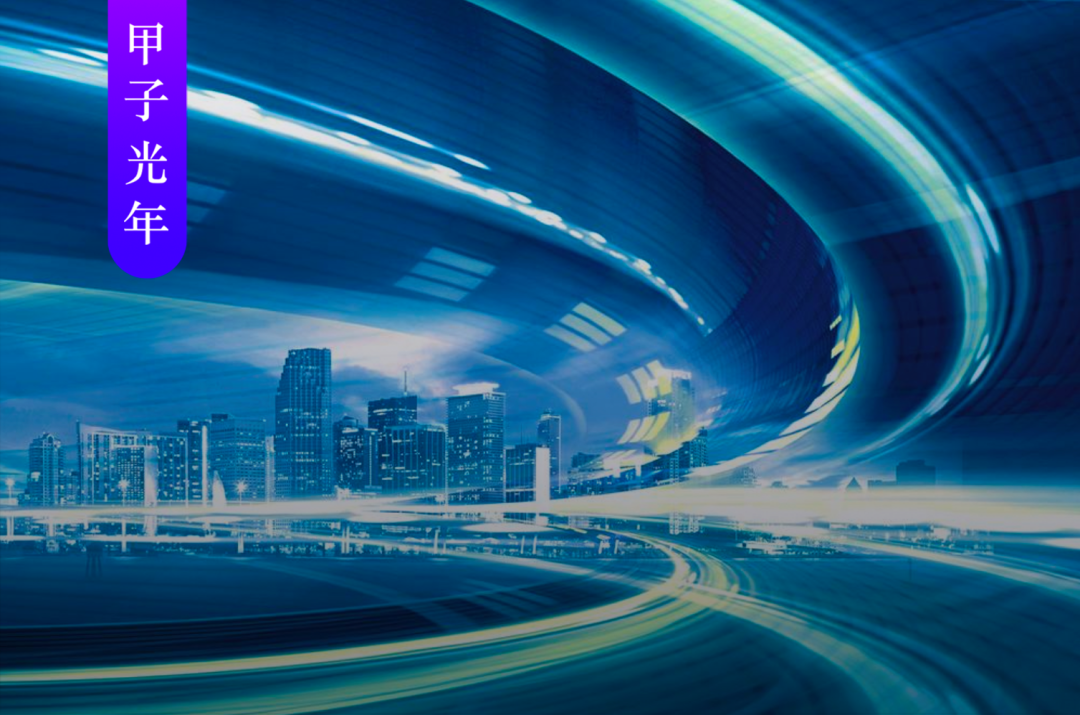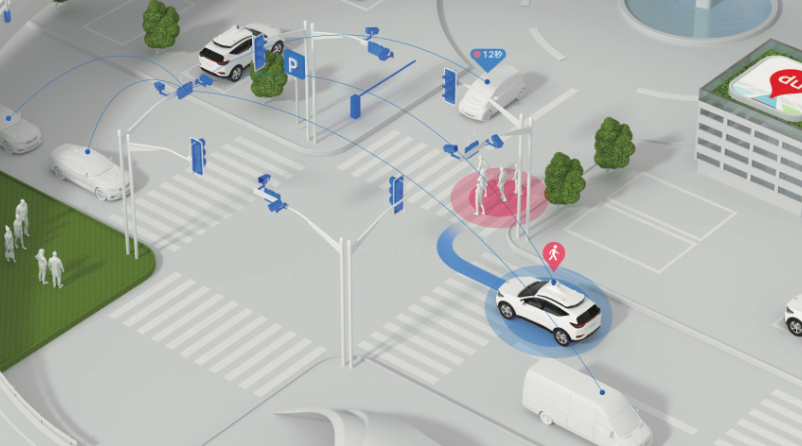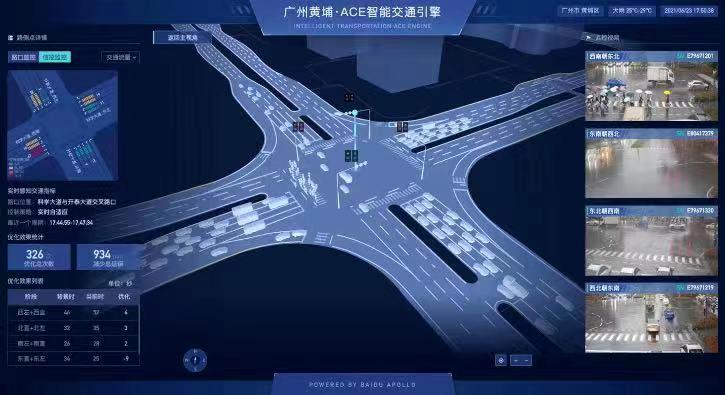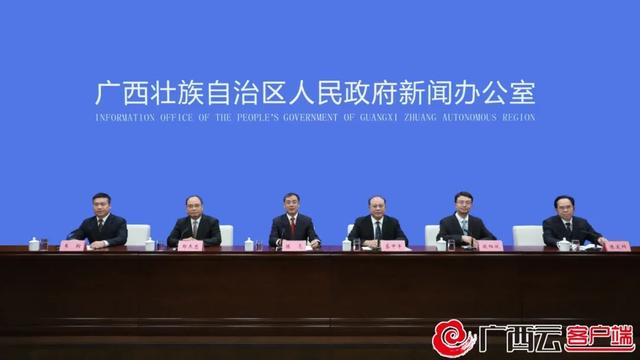Software Breaking Smart Transportation | Jiaziguang Year
Author:Jiazi Guangnian Time:2022.07.25

How does a technology company seize the time window?
Author | Fan Wenjing
Edit | Zhao Jian
In Yizhuang, Beijing, the experience of transportation has become different.
Ms. Yin, a novice driver who worked in an Internet company in Yizhuang and drove to get off work every day, recently discovered that through the green light countdown and starting reminder function through Baidu Map, you do n’t need to concentrate on the changes in the signal light at all times.
For Mr. Wan, who drove a mileage of 30,000 a year and used a car every day, he was familiar with Yizhuang's road conditions so much that he did not need to use navigation. Compared with other places, when he passed Yizhuang Green light.
What makes green light travel no longer need to rely on luck?
Behind this is the role of intelligent transportation.
At the 2022 Baidu World Conference, Li Yanhong said that intelligent transportation based on car collaboration can increase the efficiency of the pass by 15%-30%and promote the absolute growth of GDP 2.4%-4.8%per year. Intelligent transportation systems are expected to reduce traffic safety accidents by 90%. It is expected that with the in -depth practice of intelligent transportation, China's first -tier cities within four years will no longer need to restrict purchase and restrictions.
As the world's first high -level autonomous driving demonstration zone, Beijing Yizhuang launched a smart transportation system for "smart cars, smart roads, real -time clouds, reliable networks and accurate maps" within 60 square kilometers of the Economic Development Zone. Let the intelligent transportation towards the people's transportation, the citizens are happy to mention "free green lights".
The implementation of intelligent transportation has demonstrated the huge attractiveness of this trillion market, and at the same time, it has led to the participation of many companies in the upstream and downstream industrial chain.
In traditional transportation information projects, most of the builders are mainly hardware vendors to provide products and solutions such as road perception equipment and large -screen display systems. With the advancement of AI and big data technology, the importance of software is getting higher and higher, and technology companies, which are popular with software, have begun to play an increasingly important role in smart transportation projects.
When the era of software definition of intelligent transportation is coming, how does technology companies seize this opportunity?
1. How is intelligent transportation made?
Intelligent transportation refers to the intelligent solution of traffic, including smart traffic management, smart high -speed, smart parking, smart bus, etc.
But in different technology companies, the name of intelligent transportation is slightly different. Tencent and Ali call it a smart traffic solution, and Huawei calls it a comprehensive large traffic solution.
Different names reflect their own layouts in intelligent transportation. Different entry points are different, and the focus of products and solutions is different.
The development strategy is not enough. According to the core business, the participants of intelligent transportation generally include the five categories: cars, roads, clouds, nets, and pictures:
"Car" refers to the provider of autonomous driving and sensing equipment, such as Nebula Interconnection, Mushroom Cars, Hidy Zhi Driving, and other autonomous driving enterprises involving smart transportation projects;
"Road" refers to providers such as cameras, sensors, and other auxiliary rods, such as Qianfang Technology, Yi Huacu, Jin Yiji Technology, etc.;
"Cloud" refers to cloud services. In addition to cloud computing as infrastructure, some projects also need to re -build a platform for Unicom, control the car end and road equipment;
"Net" is a network infrastructure and is mainly involved in the three major operators of mobile, Unicom and Telecom. Due to the relatively complete network construction in the country, especially pilot cities, this part generally does not require smart transportation projects to re -build;
"Picture" refers to the capacity of the map. At present, Baidu Maps, Siwei Maps, and Gaode Maps have been involved in the field of intelligent transportation.
The orders for intelligent transportation projects are generally large, involving the amount of tens of millions and hundreds of millions, and few companies can cover all the above capabilities. Project subcontracting to other participants is implemented.
In the early stage of intelligent transportation projects, hardware manufacturers are very important participation roles, because the construction of transportation infrastructure such as road side equipment is "visible and touched", and play the cornerstone and leading role in transportation construction.
However, at the moment of the development of digitalization of transportation, with the implementation of projects in various places, the problems caused by hardware investment have gradually emerged.
According to professional estimates in the industry, the road -side perception equipment per kilometer road is between 1500 and 2 million (excluding data platforms and car end equipment transformation), and it is difficult to be less than 1 million yuan in the future. On the whole, hardware is more standardized and gross profit is relatively low.
The repetitive construction of the road side equipment is also a "boss difficulty" problem, causing serious waste of resources.
"Little effectiveness" is also a problem that is often criticized in traffic construction projects. In the article "The Road to Creating Relise", Jiazi Guangnian once pointed out that the current Shuangzhi project generally "attaches importance to display effects" and is facing problems that are difficult to achieve economic benefits and social benefits.
For example, traffic congestion often occurs in multiple areas of the city, and road side equipment planned for the first phase of project planning is usually a specific area, which is difficult to make citizens a clear feeling of alleviating traffic congestion as a whole.
In recent years, a new change is happening: In intelligent transportation projects, the sense of participation of technology companies is getting stronger and the proportion of software is getting higher and higher. In terms of delivery effect, avoiding repeated construction, and improving regional governance efficiency, A satisfactory answer was released.
Many companies involved in the construction of smart cities and smart transportation projects have deeply realized the changes in software proportion. Donghua Yun Guo Haozhe previously said in an interview with Jiaziguang: Beginning in 2018, the proportion of software in some smart city projects reached 80%; this proportion in 2019 increased to 90%; even some projects were 100%pure pure pure pure Software, the volume also exceeds 100 million yuan.
Nie Yuren, general manager of the solution of Baidu Smart Driving Business Group, revealed to Jiaziguang that before 2020, the market has a view that software is not very valuable. The proportion of software in intelligent transportation projects is generally only 10%. In the rise of advanced cities, the proportion of software in some projects has reached 30%to 40%.
Accelerating the construction and strategic layout of new infrastructure have risen to national planning. In 2016, with the rise of cloud computing and artificial intelligence, the government began to seek the transformation and upgrading of traditional industries with informationization and digital means. Intelligent development.
Under the general trend of traffic digitalization, hardware and software are interdependent and complementary. After the deployment of the intelligent infrastructure of the front -end road side, as the soul of the digitalization of transportation, the soft -foundation ensures efficient management of intelligent transportation and realizes the transformation of traditional transportation to intelligent transportation.
A software definition of intelligent transportation is coming.
2. How to define smart transportation?
Why is the value of software more and more important? First of all, the most important thing is the driver of national policy.
The digital traffic outline began from the "Thirteenth Five -Year Plan" of the country, and all places were doing a lot of work around digitalization of traffic. From traditional BIM (architectural information model) to urban CIM (urban information model), to the widely used digital twin technology, traffic digitalization has penetrated into the entire life cycle of transportation.
For example, the "Fourteenth Five -Year Plan of the National Economic and Social Development of Zhejiang Province and the Outline of the Outline of the 2013 Fast Visits" clearly stated that it is necessary to establish a wide -area smart traffic data brain that adapts to different application scenarios, build real -time perception, instantaneous response, and instantaneous response , Smart Management new intelligent transportation system, accelerate smart transportation and green low -carbon transportation construction; "Three -year Action Plan for the Construction of New Infrastructure (2020-2022)" proposed that by 2022, the level of intelligent infrastructure in the transportation field will increase More than 20%.
On the other hand, from the perspective of product functions, after the deployment of the intelligent infrastructure on the side of the road, the specific implementation operation, the role and value of the role are mainly based on software. "Data+Software" gives the space for smart traffic dynamic updates and iterative upgrades, which can not only break the original "one hammer buying and sell", but also bring new possibilities at the level of traffic development.
Software defined intelligent transportation, the source of innovation is mainly the infinite potential of the software, which also brings more imagination to smart transportation. It is like that only in the era of smart phones, can it have a rich software ecosystem. When we buy mobile phones and start using it, the reason why it can create value no longer depends on the CPU and camera capabilities of the mobile phone, but it depends on software capabilities and new content created by human beings based on software.
In the field of transportation construction, there are similar development logic: first deploy hardware to lay the foundation, and then rely on software to be sublimated.
The basic needs of all cities in intelligent transportation are relatively similar: relieve congestion. Traditional solutions are to build a complete transportation infrastructure. Based on a unified communication platform, the signal lights are optimized in real time.
When a large number of infrastructure and vehicle networking rate increased, many data on the car end poured into the platform and accumulated a lot of data on the center side cloud platform. At this time, the software was required to empower hardware to maximize the operating efficiency of the transportation system. Software not only solves the problem of cars and roads, but also considers the elements included in the field of transportation and people in the field of transportation, and converges to form a "intelligent operating system" for traffic management.
Chen Qingtai, the honorary director and researcher of the Institute of Enterprise Research Center of the State Council, talked about "software definition cars" and explained the changes under the led of software. "An important feature of software defining cars is that the car has the ability to evolve self -evolution. Make it from a "dead thing" that starts to be backward to a "new species'" that can be evolved.

Software definition intelligent transportation also provides an important opportunity for technology companies.
Technology companies play an increasingly important role in intelligent transportation projects. With the advanced nature of product technology, the integrity of solutions, and the brand influence of technology giants, companies represented by BATH have won a large number of intelligent transportation project orders.
After Baidu released Apollo on the autonomous driving open platform in 2017, it successively reached cooperation with Beijing Yizhuang, Shanghai Jiading, Chongqing Yongchuan, Guangzhou Huangpu, Shanxi Yangquan and other places. After 2021, he won a number of projects in Hunan Zhuzhou, Chengdu Chengdu, Chongqing High -tech Zone, Zhengzhou Zhengdong New District, Zhejiang Shaoxing and other projects.
As one of the new infrastructure operators, Huawei also actively builds intelligent transportation. From 2017 to 2020, Huawei participated in projects in the Internet of Vehicle Demonstration Zone in Shenzhen, Wuhan and other places. In October 2021, Huawei announced the establishment of the five major legions, including the "Smart Highway". Then Huawei quickly reached cooperation with nearly ten provinces and cities across the country.
Tencent has been actively participating in the construction of smart cities in various places. In terms of intelligent transportation, since 2021, Tencent has participated in networking projects in Tianjin Xiqing, Chongqing Liangjiang, Shenzhen Pingshan, Changsha, Hunan, and Chengdu, Sichuan. For software companies like Siweitu, although there is no underlying cloud platform capability provided by cloud manufacturers, they can also participate in the single field according to their own strengths. For example, in the project in Wuxi Xishan District, four -dimensional maps with maps and corresponding data. In addition to being responsible for navigation services, they are also responsible for the integration and processing of all data -related data, and then convey the processing results to the corresponding service to the corresponding service. middle.
Nie Yuren, general manager of the solution of Baidu Smart Driving Business Group, told Jia Ziguangn: "The inflection point in the era of intelligent transportation has arrived. The window period of the transportation market must be closely linked to the market demand. Through the high investment in research and development, the product leading advantage is obtained. In the shortest time, a positive cycle of positive feedback can be formed. Only before the market tends to obtain a better position "And the coming of the software definition of the traffic age is the" stairs "that they occupy an advantageous position.
However, how long will this window period last?
3. Grasp the time window
Software definition intelligent transportation has become the general trend. Therefore, at the moment, whether it is a technology company or a traditional hardware dealer, on the basis of its own advantages, it is long and short, and moves towards a common direction -hard and hard.
Neither software and hardware exist independently, and the fusion of software and hardware is more competitive.
Therefore, software competes for hardware. For example, in Baidu's "Wisdom Road" solution, including edge computing units (RSCU), road side communication units (RSU), vehicle units (OBU), and AI perception kit Research on core hardware products other than lidar.
The hardware company is also making up the software. For example, Qianfang Technology launched the transportation industry cloud platform, and Haikang Zhilian launched the intelligent connected cloud control platform and vehicle road collaborative application system.
In addition, after the three major operators' ability to make up for the cloud, they have also become a new participant in intelligent transportation in the past two years, and they have resisted with technology companies.
In addition to supplementing shortcomings on the product, sustainable commercialization capabilities will also determine who is intelligent traffic participants who eat meat and who drink soup.
From the perspective of policy trends, in the intelligent transportation projects declared this year, most of the audit departments have put forward more requirements for "commercialization", and the project needs to be carried out from "display effects" to "social benefits" to "economic benefits". Thinking in all aspects.
In the past, hardware -based projects were low in gross profit for participants, and the increase in software effects began to prove that new possibilities can be opened for commercialization.
The level of software gross profit margin depends on the degree of reuse of software in different scenarios. In the intelligent transportation projects of "demand fragmentation, business scenario, customized customer customization", data processing and AI use are similar, and the replication of the PAAS level is high.
For example, the above -mentioned alleviating traffic congestion needs in various places. The "real -time signal tuning" system born to solve this problem has reached a certain amount of replication in terms of platform construction and AI signal regulation. Nie Yuren's judgment that the replication of the demand in this regard can generally reach 70 ~ 80%, which can save a lot of costs.
The specific customized application above the platform needs to be built together. At the current stage, the needs of various places are relatively scattered, but in terms of functional implementation, the functions used in demand are limited. It can abstract multiple specific functions and applications in various scenarios through the practice of different projects, and gradually reduce customized customization. proportion.
For example, to solve the problem of traffic congestion, you need to monitor traffic signal lights and use this as one of the core data points. But even in adjacent streets, due to the different procurement batches, the brand and protocols of traffic lights may be different. Some even black boxes need a certain exploration time after accessing the system. Here here, because of the practice of many projects in the past, they can solve the problem of monitoring signal lights based on the public agreement, or judging the laws of the signal light through the self -developed system.
More importantly, software can help cities deploy front -end infrastructure in an appropriate advanced form.
For example, considering the future demand and other scenarios in terms of computing power, join the needs of the housing construction departments, urban management departments, and environmental protection departments to expand the computing power platform, and support the platform as a support to further support the application of smart city applications. Development and various applications needed by other government departments.
Furthermore, from the perspective of many industry experts, the next step of intelligent transportation is to "urban management". Different from the role of "integrated" in the IT service field. Due to the high complexity of the field of intelligent transportation, it is difficult to complete it through integrators. It can only be completed by local operators after the project is implemented.
Under the "Software Definition Smart Transportation" model, the operating model of intelligent transportation projects is also changing.
In the past, hardware -based intelligent transportation projects often had only "operation and maintenance" -the repairs and adjustments to server devices on a regular basis, and smart transportation defined by software will produce a new "operation" model. The implementation of the government and intelligent transportation will be transformed from a one -time trading relationship to the cooperative relationship between the full life cycle, forming a virtuous circle of "continuously providing data and continuous expansion services for manufacturers". While creating more business models, it is easier to form a closed -loop.
Some cities in China are already trying to travel to the floor, which is the service (MAAS) model. For example, the "Checheng Network Technology" led by the Guangzhou Municipal Government is the prototype of the domestic "smart transportation operator". Through the creation of the "Checheng.com" platform, the urban elements such as roads, intelligent network cars, and urban municipal infrastructure have been realized, forming a public digital base for urban public numbers, and supporting various applications.
In this model, the state -owned enterprises invested by the local government are generally participated in the entire process of the project implementation, and the security efficiency of the entire traffic system after the project, and the stability of the platform built in the project, and solve the problem in time to solve the problem Essence The long -term existence of continuous intelligent transportation operators transformed from one -time integrated integrators of traditional intelligent transportation has also created more possibilities for more innovative commercialization application scenarios and accelerated the high -quality development of cities.
The follow -up operations, optimizations of operators, and more exploration of commercialization need to be completed based on the software system.
"Safe, convenient, efficient, economical, and green" is the expectations of each modern person to the ideal traffic scenario. With the in -depth development of intelligent transportation, soft foundations have become the core driving force. Software capabilities, while determining the development of urban digital traffic, will also create a smarter travel environment for people.

- END -
The millennium project of Guangxi should be built like this →

The construction of the Pinglu Canal will better serve the national strategy to Gu...
Qingdao Optoelectronics New Material Industrial Park Research Institute and high -end equipment projects are put into production in the West Coast New Area

It only takes 7 months from landing to officially put into production, and promote...